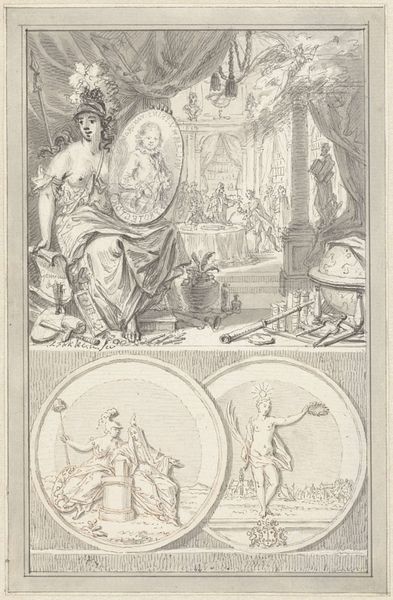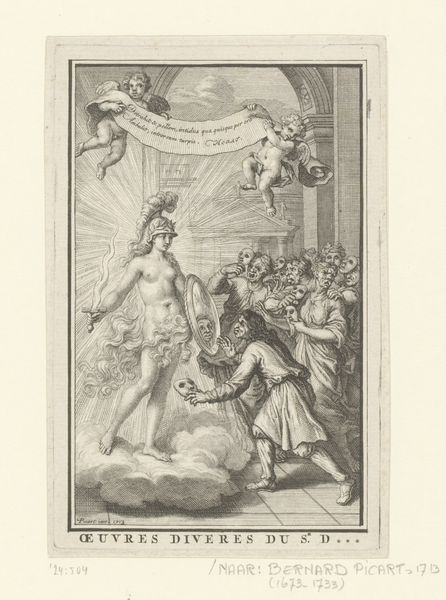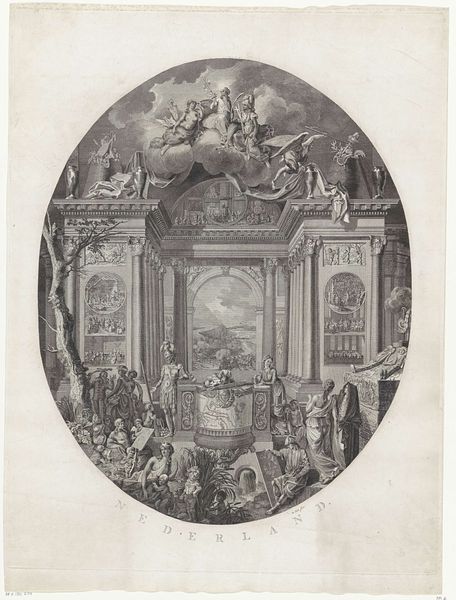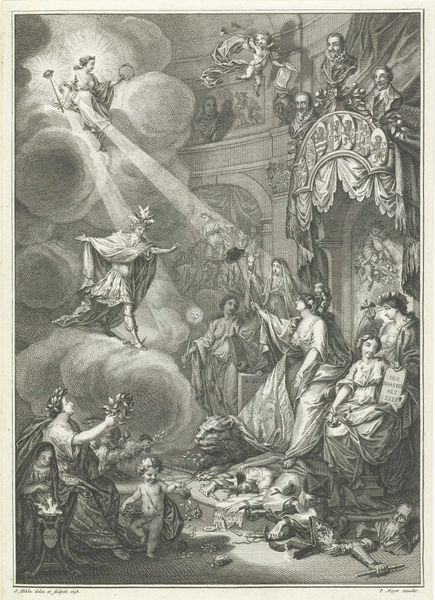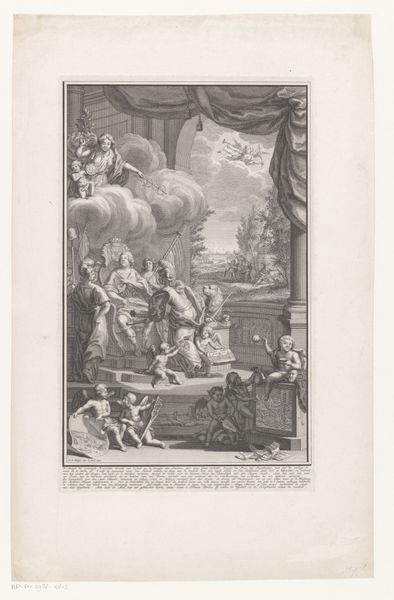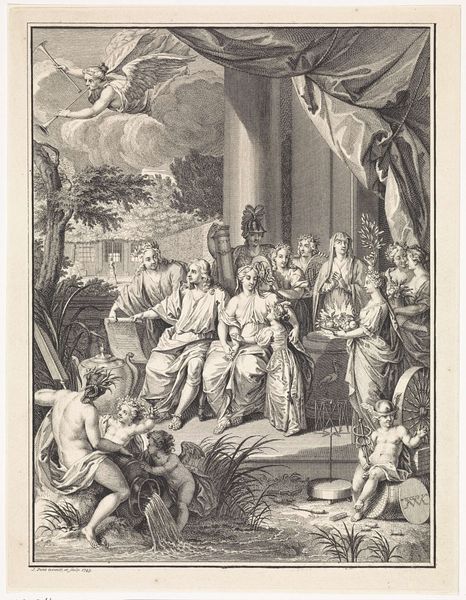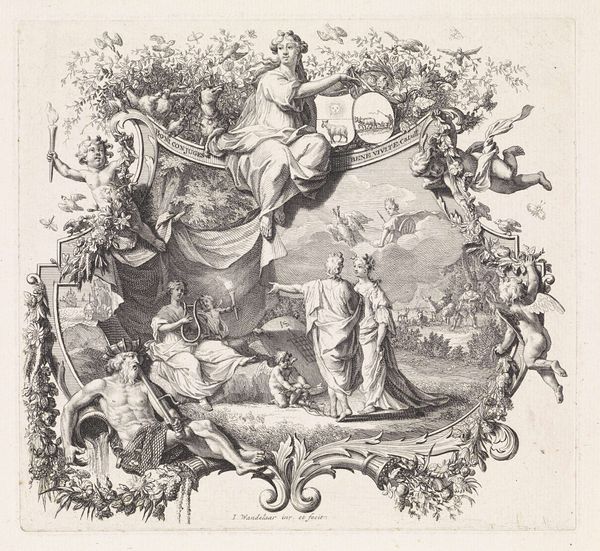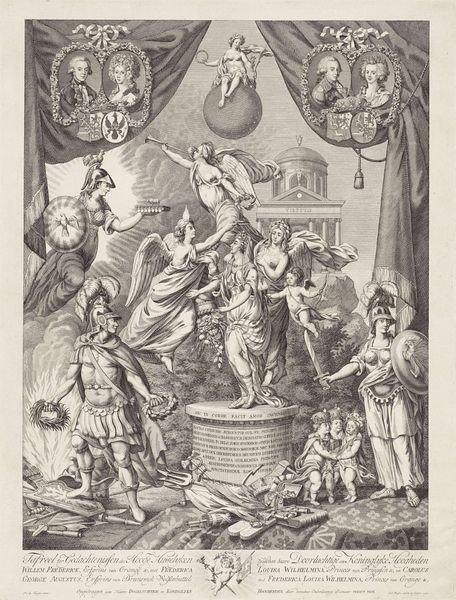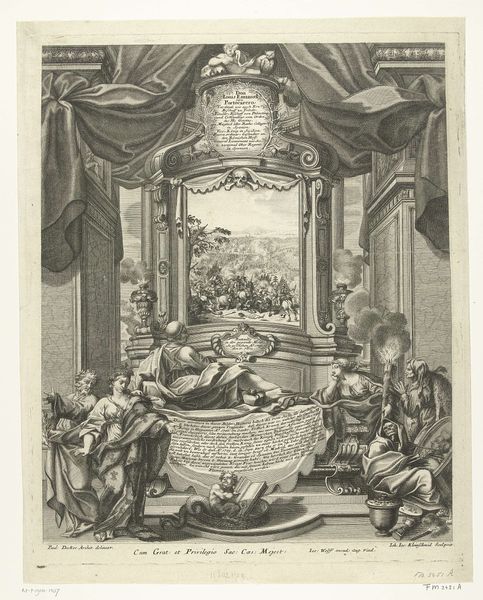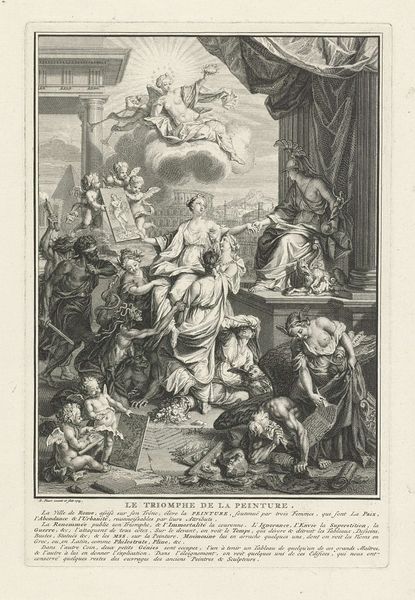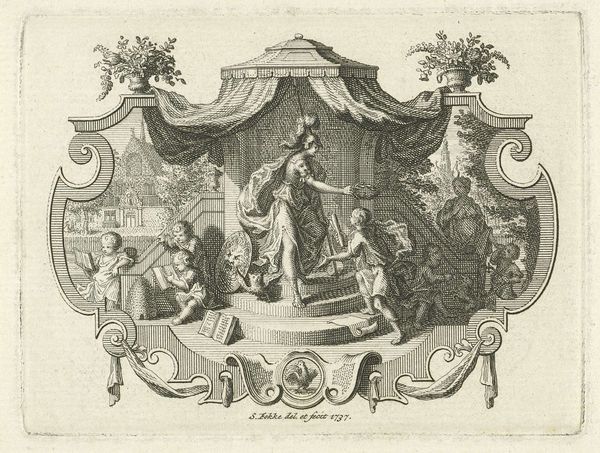
Overzeese werelddelen bieden de Republiek geschenken aan 1784 - 1790
0:00
0:00
franciscussansom
Rijksmuseum
print, engraving
#
neoclacissism
#
allegory
# print
#
figuration
#
cityscape
#
history-painting
#
engraving
Dimensions: height 340 mm, width 258 mm
Copyright: Rijks Museum: Open Domain
Curator: Good afternoon. We're standing before a fascinating piece titled "Overzeese werelddelen bieden de Republiek geschenken aan," or "Overseas continents offer gifts to the Republic." It was created sometime between 1784 and 1790 by Franciscus Sansom and is presented here as an engraving. Editor: It strikes me as a really odd combination of austere and opulent. All these classical figures frozen in place offering what, riches? But the cool detachment makes the gesture feel almost…hollow. Curator: Exactly! The neoclassical style, evident in the crisp lines and allegorical figures, lends a veneer of order and rationality. But beneath that, we see the complexities of the Dutch Republic’s relationship with its colonies. The figure representing the Republic is surrounded by gifts from overseas. What story do you see in that allegory? Editor: Well, on one hand, it speaks to the economic prosperity fueled by colonial exploitation. But the act of "offering gifts" feels incredibly loaded. It masks the violence inherent in the acquisition of those riches, you know? As though the colonies were willingly, gratefully giving away their resources to the benevolent Republic. Which obviously isn’t true. And looking closer… isn't it bizarrely theatrical? That empty oval centerpiece is waiting for an important inscription, but even without it, all the actors perform for our gaze, as well, framing the power structures at play. Curator: Yes, it’s very much a performance. Notice how the figures are arranged – there’s a hierarchy present. Europe is central, seated and adorned, while the other continents are… presented to her. The racialized figures of the Americas and Africa kneel with offerings, visually reinforcing a power imbalance. Editor: And there’s a disquieting erasure in this act of memorializing empire. It's this perfect little world being offered gifts, all captured with perfect detail; while reality—exploitation, resistance, and suffering—is out of frame. What does neoclassicism provide for a time like that, I wonder? Curator: Perhaps that style of idealization functioned as a form of denial, as an ideological anesthetic for those in power. These scenes are really an exercise in political PR for an elite that knows its wealth is made possible by exploitation. Editor: I'd agree. It makes you wonder what stories that vacant oval at the center *should* contain—maybe an acknowledgement of the human cost of empire. Thanks for exploring this powerful piece. Curator: Thank you! A lot to digest, indeed.
Comments
No comments
Be the first to comment and join the conversation on the ultimate creative platform.
